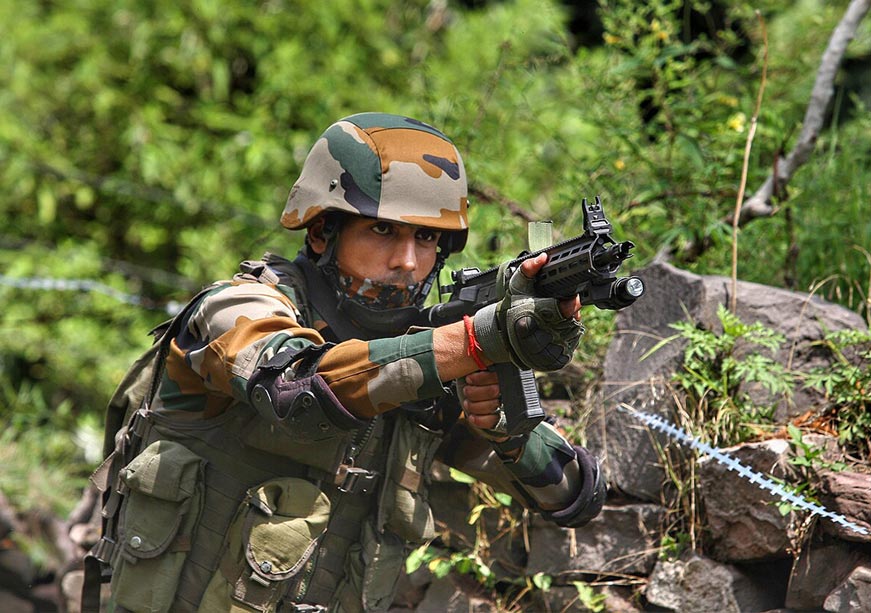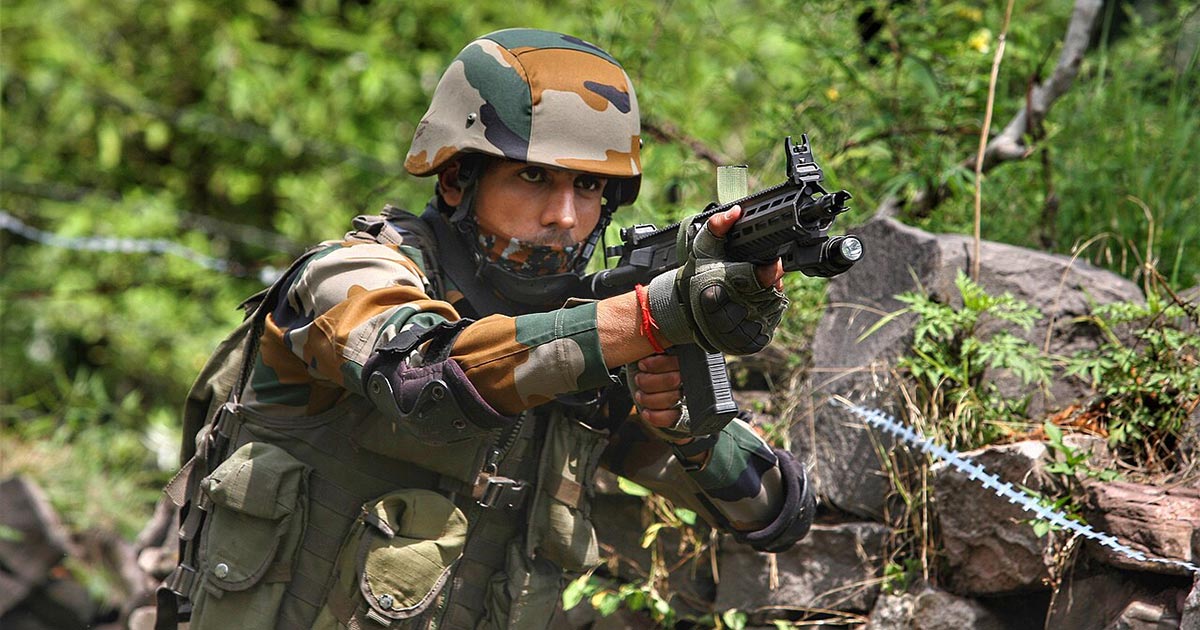
Image Source: Wikimedia Commons
Operation Sindoor marks a transformative moment for the Indian military’s warfare strategy. Leveraging advanced technological capabilities and embedding integrated command and control for operational synergies, the military established battlefield dominance and deterrence against the Pakistani military. This campaign also highlighted the importance of secure, robust, and trustworthy communications, notably as the military ensured a swift and coordinated response to neutralise multiple simultaneous threat vectors across air, land, sea, cyber, space, and information domains. As the Indian military looks to the future of warfare, it will need to strengthen its communications networks to ensure battle readiness.
In this context, edge computing offers the potential to strengthen the military’s communications capabilities. By enabling the processing and storage of data closer to the battlefield, edge computing can potentially save time and resources, and consequently expedite responses on the battlefield. Worldwide, militaries have undertaken exploratory experiments in edge computing, leveraging the growing penetration of 5G and advances in computational capabilities. This article analyses the potential of tactical edge computing and its potential implications for the Indian military.
From Remote Cloud to Edge
At present, a significant portion of military communications relies on cloud computing. This typically involves storing and processing sensitive military data on remote servers, often located far from where the data is generated on the ground. This model presents three fundamental challenges in a military context: latency, security, and connectivity.
First, and perhaps most acutely felt on the frontlines, is the dependence on network connectivity. Unlike secure cloud environments in urban and high-density telecom network areas, military operations frequently occur in remote or border regions with patchy internet or limited network coverage. Since cloud computing relies so heavily on stable and high-speed connectivity, its utility sharply diminishes in these conditions.
At its core, tactical edge cloud computing decentralises the entire sequence of data collection, storage, analysis, and insight generation. Instead of sending raw data from frontline sensors and systems to a faraway server, edge computing enables data to be processed locally, close to its point of origin.
The second major issue is latency. On the battlefield, quick, split-second decisions can critically determine the course of military operations. This means that the time between data collection and decision-making must be minimal. With cloud systems, this can sometimes be an issue, as there may be delays in the data travelling from the origin point to the cloud before it can be acted upon.
Finally, there is the threat of cyberattacks, interception, and foreign surveillance of critical data. Many active conflict zones lack strong cybersecurity infrastructure, making cloud-transmitted communications and data especially vulnerable to adversarial attacks. For instance, in January 2024, the Ukrainian Security Service discovered that the Russian military had breached webcams in the capital Kyiv that broadcast the operation of Ukraine’s air defence systems and locations of the city’s critical infrastructure. The Russian military used the information acquired to target these sites. Given the confidentiality and sensitivity of military information, any breach or loss in this space poses enormous risks to both mission integrity and personnel safety.
Thus, although cloud computing certainly provides some advantages, the constantly evolving frontlines of a battlefield will require an approach beyond such cloud systems. In other words, ensuring a military edge will prove increasingly critical in future standoffs.
Edge Computing for Battlefield Needs
Edge computing has emerged as a powerful answer to these pressing challenges. At its core, tactical edge cloud computing decentralises the entire sequence of data collection, storage, analysis, and insight generation. Instead of sending raw data from frontline sensors and systems to a faraway server, edge computing enables data to be processed locally, close to its point of origin. Localisation is possible thanks to modern tools, sensors, and computers installed directly where data is generated, or at the so-called “edge” of military networks.
Edge cloud systems are specifically developed to function effectively even when bandwidth is low or connectivity is inconsistent, which is often the case in remote border or hostile areas. This means that critical missions can continue seamlessly, regardless of network disruptions, providing operational continuity even in the most adverse environments.
Another vital advantage is in compressing decision timelines and reducing latency. With edge computing, the time span between initial data capture and resultant action is dramatically reduced. When every microsecond matters, as it often does in military conflict, this reduced latency proves invaluable. In situations where there is little margin for error and commanders must make decisions in real-time, edge systems enable expedited decision-making.
Edge cloud systems are specifically developed to function effectively even when bandwidth is low or connectivity is inconsistent, which is often the case in remote border or hostile areas. This means that critical missions can continue seamlessly, regardless of network disruptions, providing operational continuity even in the most adverse environments.
Edge computing also keeps sensitive data local, reducing the attack surfaces that adversaries may exploit. Because information does not traverse wide networks or centralised servers as often, the likelihood of interception is greatly diminished. Moreover, data can be encrypted and cleansed before it is transmitted elsewhere or used for future training of Artificial Intelligence (AI) systems, offering additional security layers and reliability.
A Global Push
The push for a military edge is not a distant aspiration. Rather, it is a central focus of current military advancements.
China, for instance, has been actively pursuing this capability. The People’s Liberation Army (PLA) is investing heavily in edge computing solutions, integrating data from a vast array of sensors and platforms, and using these analytics for intelligence, surveillance, and targeting purposes. China’s defence sector is also rolling out 5G networks, which enable rapid, low-latency data processing and facilitate advanced multi-access edge computing. A state council report as early as 2017 had forecasted that 5G would underpin “real-time collaborative AI” across several military domains.
This 5G backbone supports multi-access edge computing, where autonomous platforms (including drones and self-driving vehicles) perform efficient data processing and AI-powered analytics onsite. China’s ambitions even extend to space, with its “Three Body Computing Constellation,” an orbital satellite network that brings edge computing infrastructure into space, enabling autonomous real-time data processing and rapid response capabilities.
The United States, too, is quickly moving to embrace this capability. The Department of Defense, for instance, is actively integrating edge solutions into its operational infrastructure. The Joint Operation Edge clouds under the Defense Information Systems Agency have seen various interconnected edge computing platforms in US overseas military bases. The 2025 Project Convergence also saw the XVIII Airborne Corps of the US Army test out several edge node solutions that could increase their operational flexibility if these technologies are deployed in remote areas. The Lockheed Martin F-35 fighter jet is another example of edge computing in aviation, as it has a Distributed Aperture System capable of locally processing up to 10 terabytes of data for threat identification.
Other militaries echo the US and China’s forward-leaning approach.
In Europe, the North Atlantic Treaty Organisation (NATO) has established a research group on “Edge Computing at the Tactical Edge” to explore methods for maintaining uninterrupted communication and cooperation in joint operations. Likewise, the Australian Defence Force has engaged the industry through the Nexium Defence Cloud Edge to explore the development of a secure tactical cloud computing capability for the battlefield.
Homegrown Innovation and the Path Ahead for India
India has also begun integrating tools equipped with edge AI capabilities into its military, with a growing emphasis on indigenous innovation. According to a 2022 report by the Ministry of Defence’s (MoD) Department of Defence Production, several next-generation military tools leveraging edge computing for real-time analysis have already been outlined and trialled.
As the Indian military deploys more connected platforms and systems, edge computing will play a crucial role in their optimal integration. It will also enable uninterrupted operations even in the face of network disruptions.
One such example is the BLADe-S ISR platform, powered by edge computing, which can analyse auditory, visual, or textual inputs, apply natural language processing, and generate actionable intelligence on the go. The Chimera-22 Smart Camera, another notable advancement, is edge AI-enabled and can be deployed for surveillance and prompt detection of adversary drones or threats. Platforms like the Deepcatch Edge AI enable multiple cameras to work together, leveraging AI for diagnostics and threat detection with minimal human intervention.
There is also significant promise in partnering with innovative private sector organisations. Indian companies such as ideaForge, a leading UAV supplier, have already equipped drones with onboard processing for real-time surveillance data analysis. Likewise, InferQ, in partnership with Latent AI, has developed onboard threat detection and classification technologies.
Most recently, the Indian Army has also identified edge computing as one of the 33 niche technologies that the service will adopt by 2030. With a diverse terrain, the development of edge computing capabilities will considerably benefit India, enabling the military to adapt to the varying infrastructure constraints. Moreover, it will also allow the frontline formations to leverage the multiple data streams available and gain a comprehensive picture of the battlefield. As the Indian military deploys more connected platforms and systems, edge computing will play a crucial role in their optimal integration. It will also enable uninterrupted operations even in the face of network disruptions.
To fully benefit from edge computing, the MoD should include it as a focus area in the Innovations for Defence Excellence initiative. This will help domestic companies and startups use their technology skills to develop solutions in this field. In the information-dominant warfare environments of tomorrow, edge computing capabilities will undoubtedly serve as a powerful force multiplier.
Sameer Patil is the Director of the Centre for Security, Strategy, and Technology at the Observer Research Foundation.
Dhruv Banerjee is a Research Intern with the Observer Research Foundation.
The views expressed above belong to the author(s). ORF research and analyses now available on Telegram! Click here to access our curated content — blogs, longforms and interviews.

